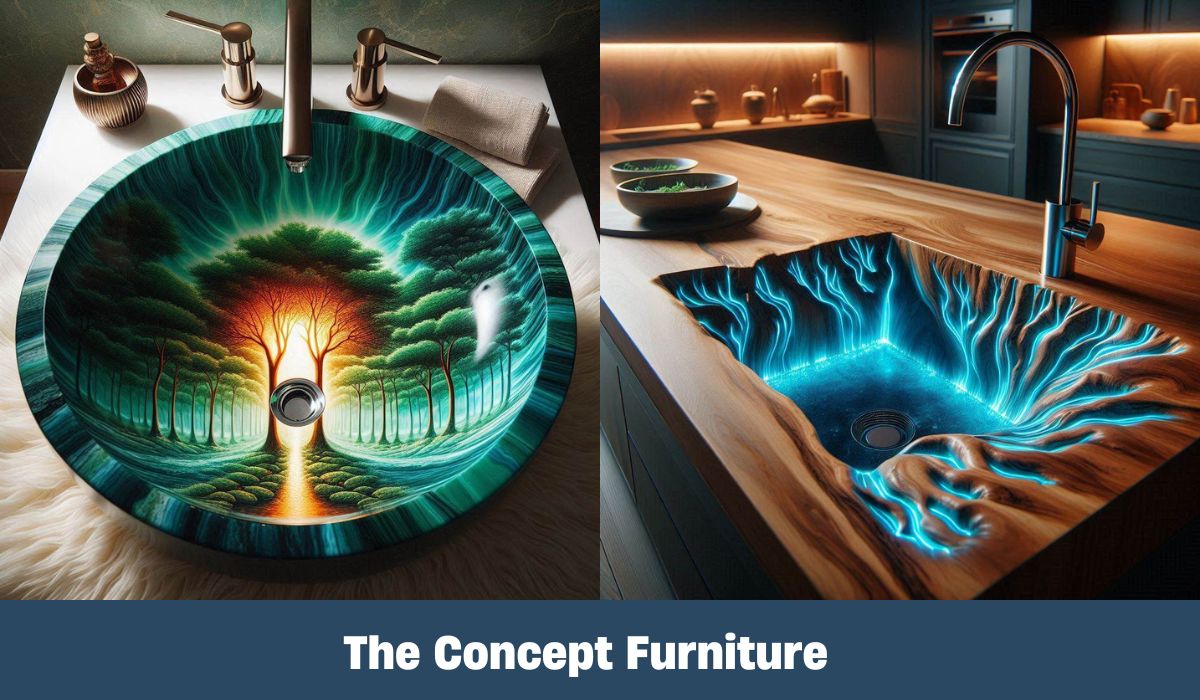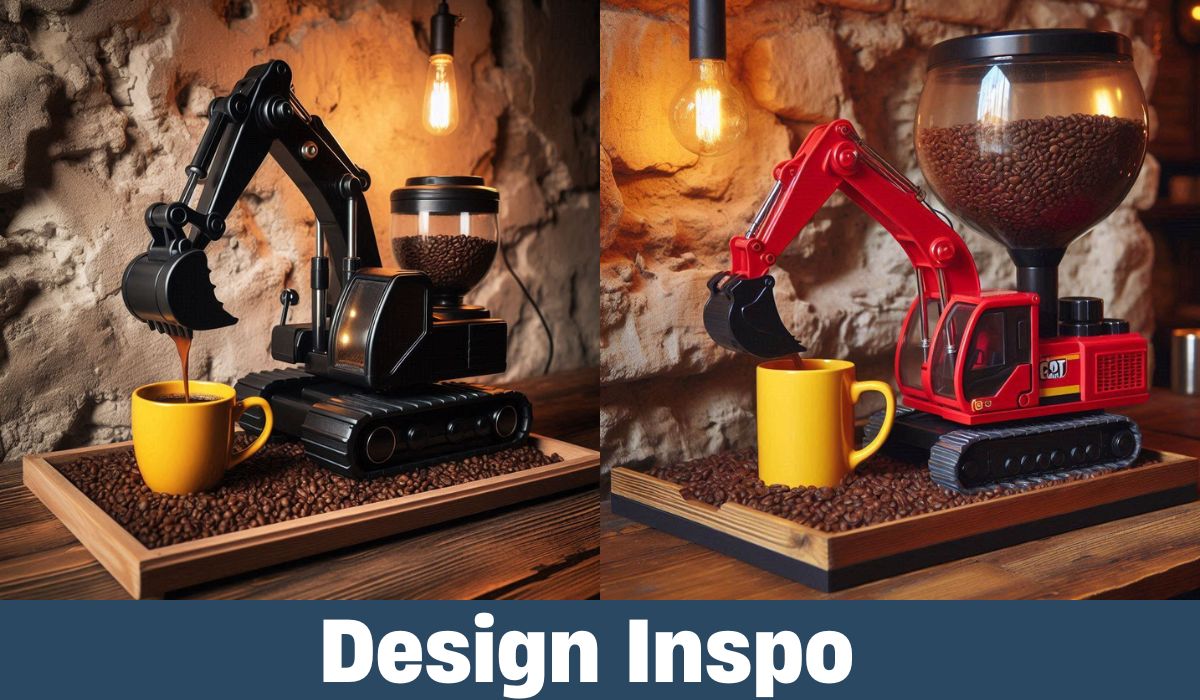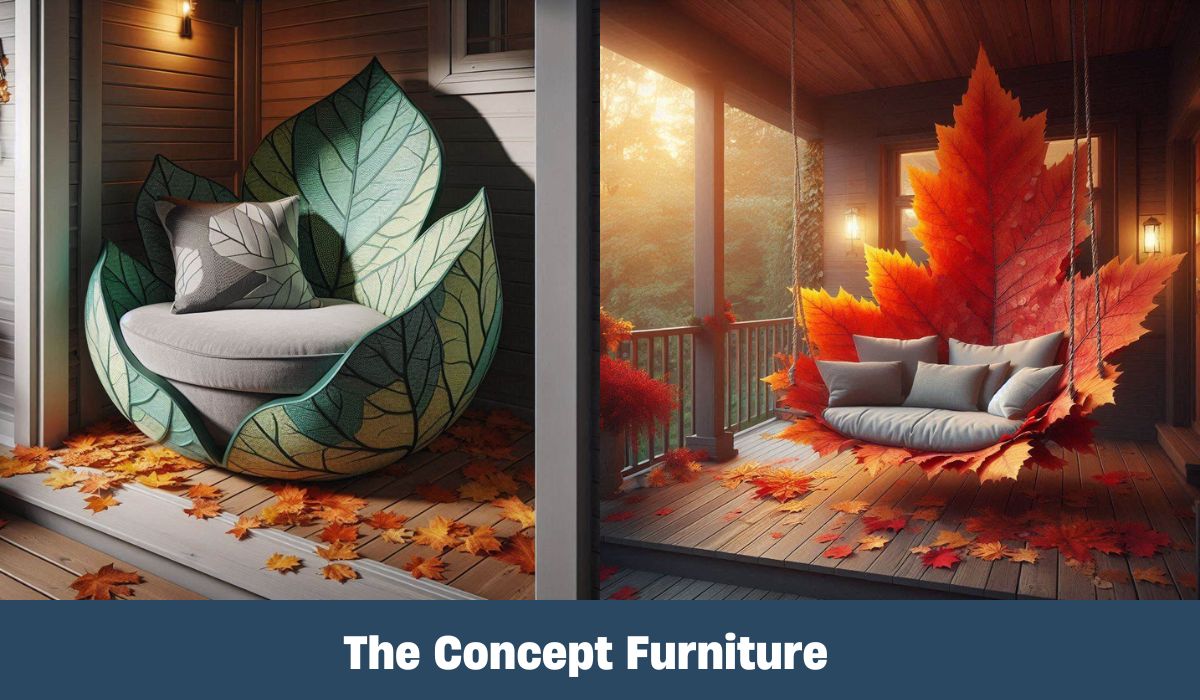In recent years, the home improvement and interior design industries have witnessed a remarkable innovation: epoxy nature sinks. These stunning creations not only enhance the aesthetic appeal of kitchens and bathrooms but also offer unparalleled durability and functionality. As homeowners increasingly seek ways to blend beauty with practicality, epoxy nature sinks have emerged as the perfect solution. This article will delve into the various aspects of epoxy nature sinks, exploring their composition, benefits, design considerations, installation processes, maintenance tips, cost analysis, user experiences, environmental impact, and future trends.
Introduction to Epoxy Nature Sinks
Epoxy nature sinks represent a fusion of art and function, elevating the concept of traditional sinks into an expressive and personalized element of home decor. By utilizing epoxy resin—a synthetic material known for its versatility—these sinks can mimic natural elements like wood, stone, or even abstract designs.
The rise in popularity of epoxy nature sinks is not just a passing trend; it reflects a growing desire for unique and customizable kitchen and bathroom fixtures that stand out. As we explore the ins and outs of these artistic sinks, we’ll uncover what makes them such a sought-after choice among modern homeowners.
Definition of Epoxy Nature Sinks
At its core, an epoxy nature sink refers to a sink crafted from epoxy resin that incorporates elements inspired by nature. This could range from colors reminiscent of ocean waves to textures resembling tree bark or marble.
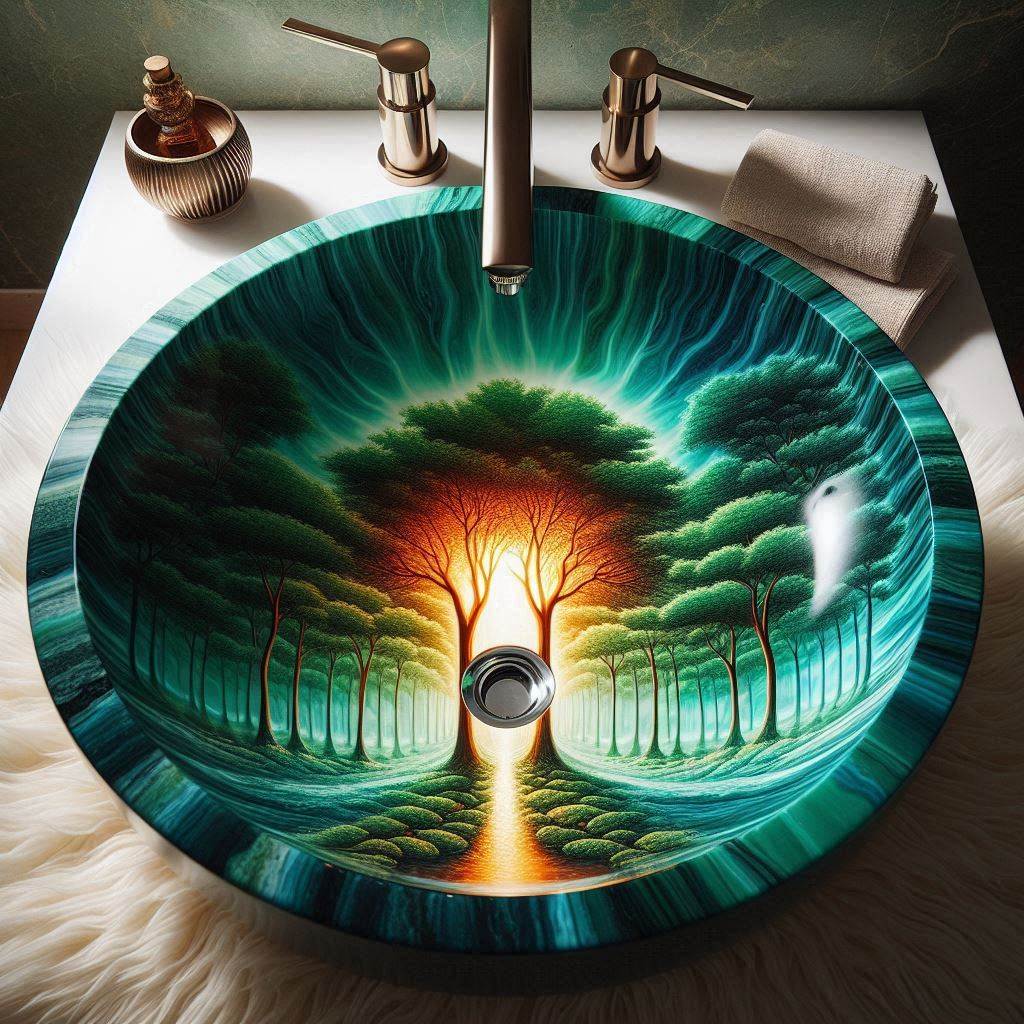
Epoxy itself is a type of thermosetting polymer that becomes rigid when cured through a chemical reaction. The resulting material is not only visually striking but also highly functional. The versatility of epoxy allows artisans and designers to create sinks that are both practical and works of art, capable of enhancing the ambience of any space.
Historical Context and Development
The development of Epoxy Nature Sinks as a material can be traced back to the mid-20th century when it was first introduced for various industrial applications. Initially utilized for coatings and adhesives, the use of epoxy began to expand into the realm of art and design during the late 20th century. Artists and craftsmen recognized the potential of this material for creating intricate designs and durable surfaces.
As the crafting community evolved, so did the techniques for working with epoxy. Today, artisans specialize in creating custom epoxy nature sinks that showcase their skills and creativity. With advancements in technology, the production process has become more efficient, making these sinks accessible to a wider audience.
The Composition of Epoxy Resin
Understanding the composition of epoxy resin is essential to grasp the advantages of epoxy nature sinks fully. Epoxy is primarily made up of two components: a resin and a hardener. When combined, these create a robust and stable material that exhibits desirable properties.
Types of Epoxy Resins
There are numerous types of Epoxy Nature Sinks resins available on the market, each with its unique characteristics and applications. Some common types include:
- Bisphenol A epoxy: This is the most widely used type of epoxy and offers great adhesion and durability. It’s often found in commercial-grade products and is ideal for heavy-duty applications.
- Novolac epoxy: Known for its superior heat resistance, novolac epoxy is commonly used in environments exposed to high temperatures. It’s perfect for specialized sinks intended for unique settings.
- Flexible epoxy: This type combines flexibility with strength and is ideal for applications where some degree of movement is expected. It’s particularly useful in custom designs where structural integrity must be maintained without becoming brittle.
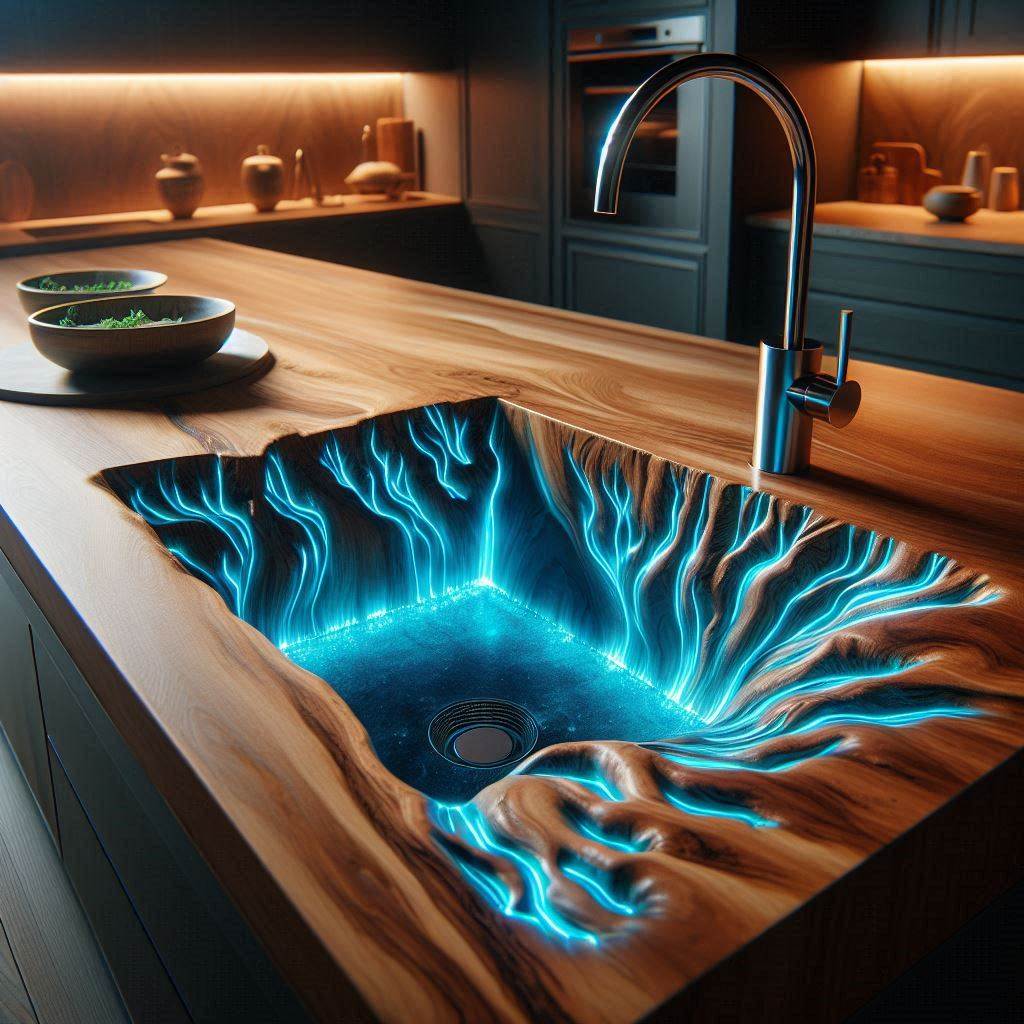
Each type of epoxy resin serves different purposes and can significantly affect the final appearance and functionality of the epoxy nature sink.
Chemical Properties of Epoxy
Epoxy resins possess several key chemical properties that make them well-suited for sink applications. They have low shrinkage upon curing, which helps maintain the shape and structure of the sink. Additionally, they exhibit strong adhesion, ensuring that decorative elements created within the sink do not separate or peel away.
One of the standout features of epoxy is its excellent chemical resistance. This property makes epoxy nature sinks resilient against common household chemicals, ensuring that they remain pristine over time. Furthermore, epoxy’s impermeability prevents water from seeping into the material, eliminating concerns about mold and mildew growth.
Benefits of Using Epoxy Nature Sinks
As homeowners search for unique solutions to elevate their living spaces, the benefits of epoxy nature sinks become apparent. From aesthetic appeal to functional longevity, these sinks present compelling advantages.
Aesthetic Appeal and Customization
One of the most significant benefits of epoxy nature sinks is their incredible aesthetic appeal. Homeowners can choose from a vast array of colors, patterns, and finishes, allowing for full customization that reflects personal style.
Artisans can even incorporate organic materials such as flowers, leaves, or stones directly into the sink, further enhancing its uniqueness. The result is a striking centerpiece that draws attention and sparks conversation.
Moreover, the glossy finish of Epoxy Nature Sinks enhances the visual depth of the colors, creating an engaging play of light and shadow. Whether you desire a vibrant, eye-catching statement piece or a subtle, earthy design, the possibilities are virtually limitless.
Durability and Longevity
When investing in home fixtures, durability is a crucial factor. Epoxy nature sinks are engineered to withstand the rigors of daily use. The hard surface of epoxy is resistant to scratches, dents, and impacts, making it less likely to show wear over time.
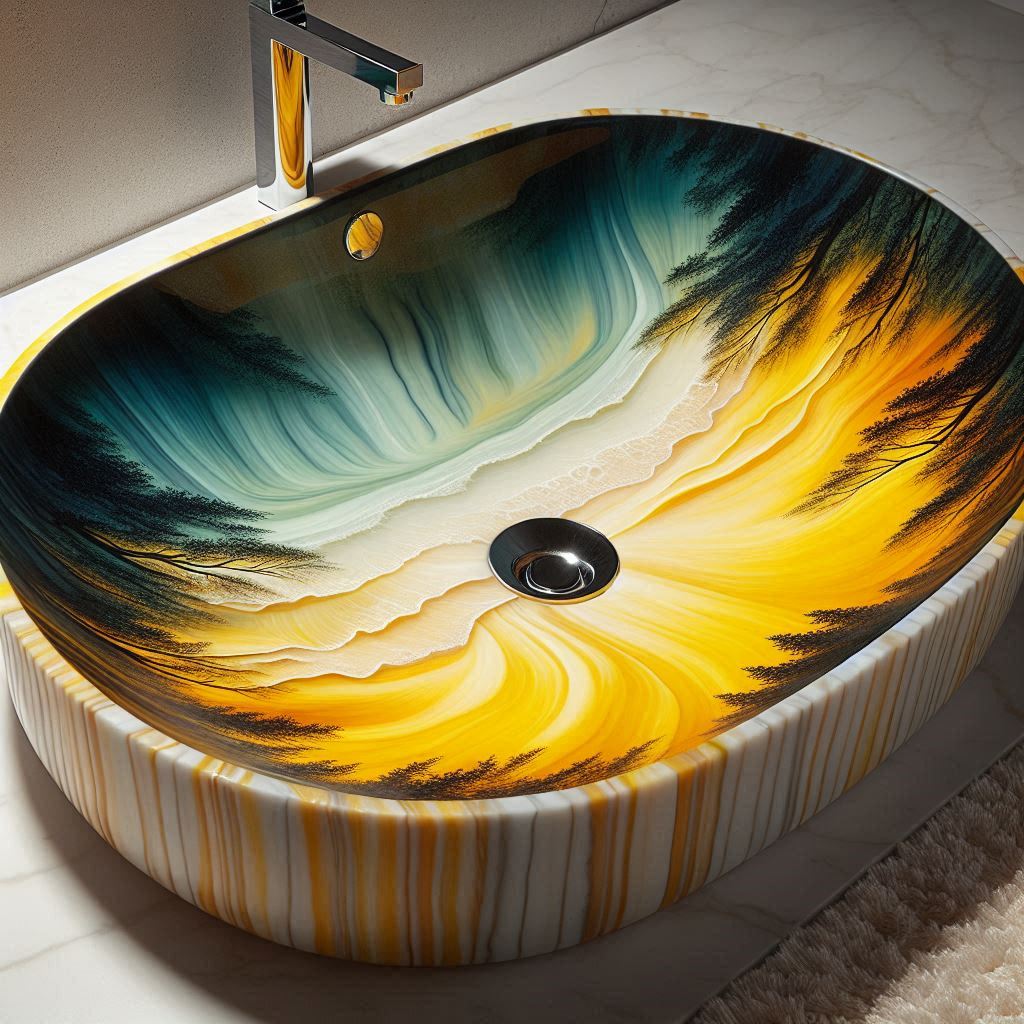
Additionally, epoxy’s non-porous nature protects it from stains, odors, and bacteria that can plague other sink materials. This means that with proper care, an epoxy nature sinks can last for many years, providing exceptional value for homeowners.
Resistance to Chemicals and Stains
Given that kitchens and bathrooms are often exposed to a variety of chemicals—from cleaning agents to food residues—having a sink that can resist these substances is of utmost importance. Epoxy nature sinks boast a significant level of resistance to a wide range of chemicals, ensuring that they maintain their beauty and functionality even after frequent exposure.
This attribute is particularly beneficial for those who enjoy cooking or hosting gatherings. With an epoxy nature sink, the worry about stains or damage from spills becomes a thing of the past.
Eco-Friendly Options
As sustainability continues to gain traction in consumer decision-making, epoxy nature sinks can be produced using eco-friendly practices. Many manufacturers prioritize sourcing raw materials responsibly and reducing waste throughout the production process.
Homeowners can find options that utilize recycled content or bio-based epoxies that minimize environmental impact. Choosing an eco-friendly epoxy nature sinks not only contributes to a healthier planet but also aligns with the values of environmentally conscious consumers.
Design Considerations for Epoxy Nature Sinks
When integrating an epoxy nature sink into a home, thoughtful design considerations are paramount. Several factors contribute to creating a harmonious and functional space.
Choosing the Right Colors and Patterns
Selecting colors and patterns for an epoxy nature sink should be an exciting yet strategic process. Given the multitude of options available, it’s essential to consider how the chosen design will complement existing decor.
For instance, if a kitchen features neutral tones, a vibrant Epoxy Nature Sinks can serve as a stunning focal point. On the other hand, a more subdued pattern might work better in a tranquil bathroom setting. Blending colors with surrounding fixtures and materials can create a cohesive look that enhances the overall ambiance of the space.
Size and Shape Variations
Epoxy nature sinks come in various shapes and sizes to suit different applications. Whether you need a compact vessel sink for a small bathroom or a spacious farmhouse sink for a bustling kitchen, options abound.

Additionally, the shape of the sink can influence functionality and usability. For example, a deep, rectangular sink may be ideal for soaking pots and pans, while a shallow round sink may accommodate everyday washing tasks. Homeowners should assess their individual needs before settling on a particular size and shape.
Integration with Kitchen and Bathroom Design
To achieve a seamless look, careful consideration must be given to how the epoxy nature sink integrates with the rest of the kitchen or bathroom design. Elements such as cabinetry, countertops, and fixtures should complement the sink’s design.
Choosing compatible materials, such as pairing an epoxy nature sinks with wooden cabinets or quartz countertops, can create a unified aesthetic. Similarly, coordinating faucet finishes and hardware will ensure that the entire space feels intentional and thoughtfully planned.
Installation Process of Epoxy Nature Sinks
Once the decision has been made to invest in an epoxy nature sink, understanding the installation process is crucial. Proper installation ensures that the sink functions optimally and remains securely in place for years to come.
Preparation of the Area
Before installing the epoxy nature sinks, preparation is key. First, assess the existing plumbing and cabinetry to determine whether any modifications are needed. Removing the old sink and ensuring a clean workspace allows for a smoother installation.
Next, measure the dimensions of the new sink to verify compatibility with the designated area. Proper measurements help avoid costly mistakes and ensure a snug fit.
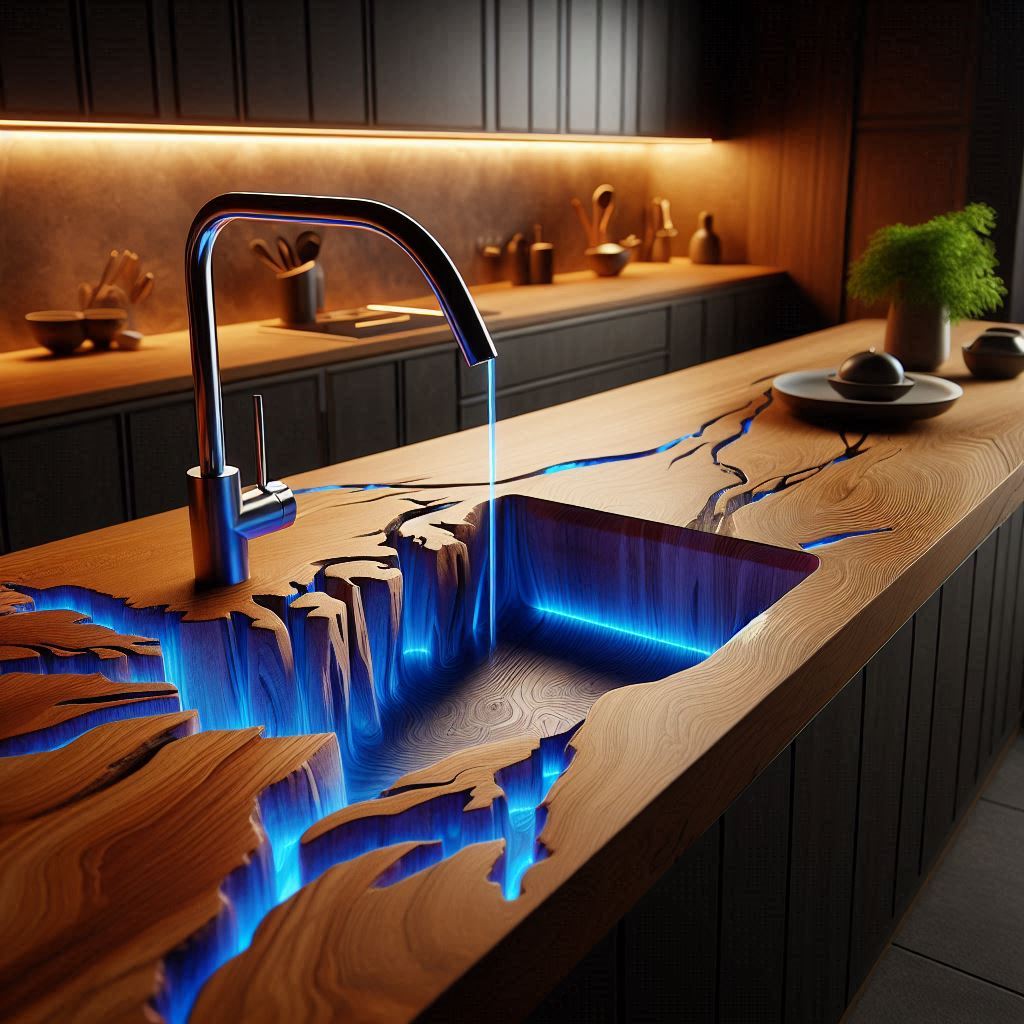
Step-by-Step Installation Guide
- Turn Off Water Supply: Begin by shutting off the water supply to prevent any leaks during installation.
- Disconnect Plumbing: Carefully disconnect the plumbing lines and remove the old sink. Make sure to keep all fittings and parts for reinstallation.
- Position the New Sink: Place the epoxy nature sink in the designated area, ensuring it fits securely.
- Reconnect Plumbing: Reattach the plumbing lines, ensuring there are no leaks. Use plumber’s tape as needed to create a watertight seal.
- Seal Edges: Apply silicone caulk around the edges of the sink to provide additional waterproofing and secure the sink in place.
- Test Functionality: Once everything is connected, turn on the water supply and test the sink to ensure proper drainage and operation.
Common Pitfalls and How to Avoid Them
Despite the straightforward installation process, certain pitfalls can arise if not addressed properly. One common mistake is failing to ensure a level installation; an unlevel epoxy nature sinks can lead to poor drainage and pooling water.
Another concern is neglecting to check compatibility with existing plumbing. Homeowners should take care to consult professionals if necessary and ensure that all connections are secure.
Finally, rushing the sealing process can lead to gaps that allow water to seep beneath the epoxy nature sinks. Taking the time to apply caulk correctly will prevent future issues.
Maintenance and Care for Epoxy Nature Sinks
Once installed, maintaining the beauty and functionality of an epoxy nature sinks is vital. With proper care, these sinks can look stunning for years.
Cleaning Techniques
Cleaning an epoxy nature sinks requires specific techniques to preserve its finish. Generally, warm soapy water and a soft cloth are all that’s needed for regular cleaning. Avoid harsh chemicals or abrasive cleaners, as they can damage the surface.
Occasional deep cleaning can involve a gentle scrub with baking soda for tough stains, followed by rinsing thoroughly. Always dry the epoxy nature sinks after cleaning to prevent water spots and streaks.
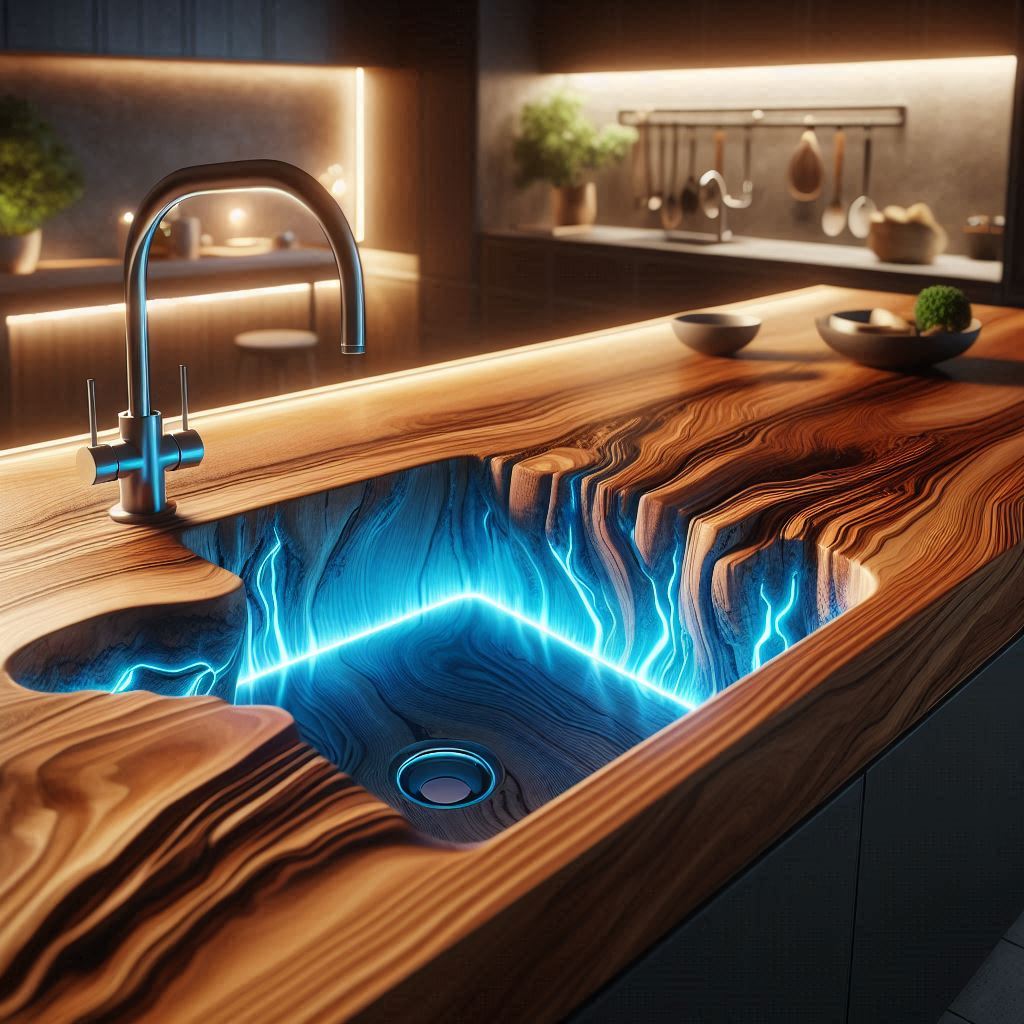
Preventing Scratches and Damage
While epoxy nature sinks are designed to be durable, it’s wise to take precautions to avoid scratches. Using cutting boards when preparing food and avoiding direct contact with sharp utensils will help preserve the sink’s surface.
Additionally, placing mats or protective pads can prevent impacts from heavy items. Being mindful of everyday usage will go a long way toward maintaining the sink’s pristine condition.
Regular Upkeep Tips
Beyond cleaning, regular upkeep plays a significant role in prolonging the life of an epoxy nature sinks. Homeowners should periodically inspect the sink for signs of wear or damage, addressing any issues promptly.
Reapplying sealants or caulking as needed can protect edges from moisture penetration. Moreover, keeping the sink free from standing water will help prevent mold and mildew growth.
Cost Analysis of Epoxy Nature Sinks
Investing in an epoxy nature sinks involves evaluating initial costs versus long-term savings. Understanding the financial aspects helps homeowners make informed decisions.
Initial Investment vs. Long-Term Savings
The initial investment in an epoxy nature sinks may be higher than traditional materials, but this expense can be offset by long-term savings. Given their durability and resistance to staining and scratching, epoxy nature sinks require fewer replacements and repairs over time.
Additionally, avoiding the need for frequent cleaning supplies due to their stain-resistant properties can translate into ongoing savings. Homeowners should consider the lifespan and maintenance costs when assessing the value of an epoxy nature sinks.
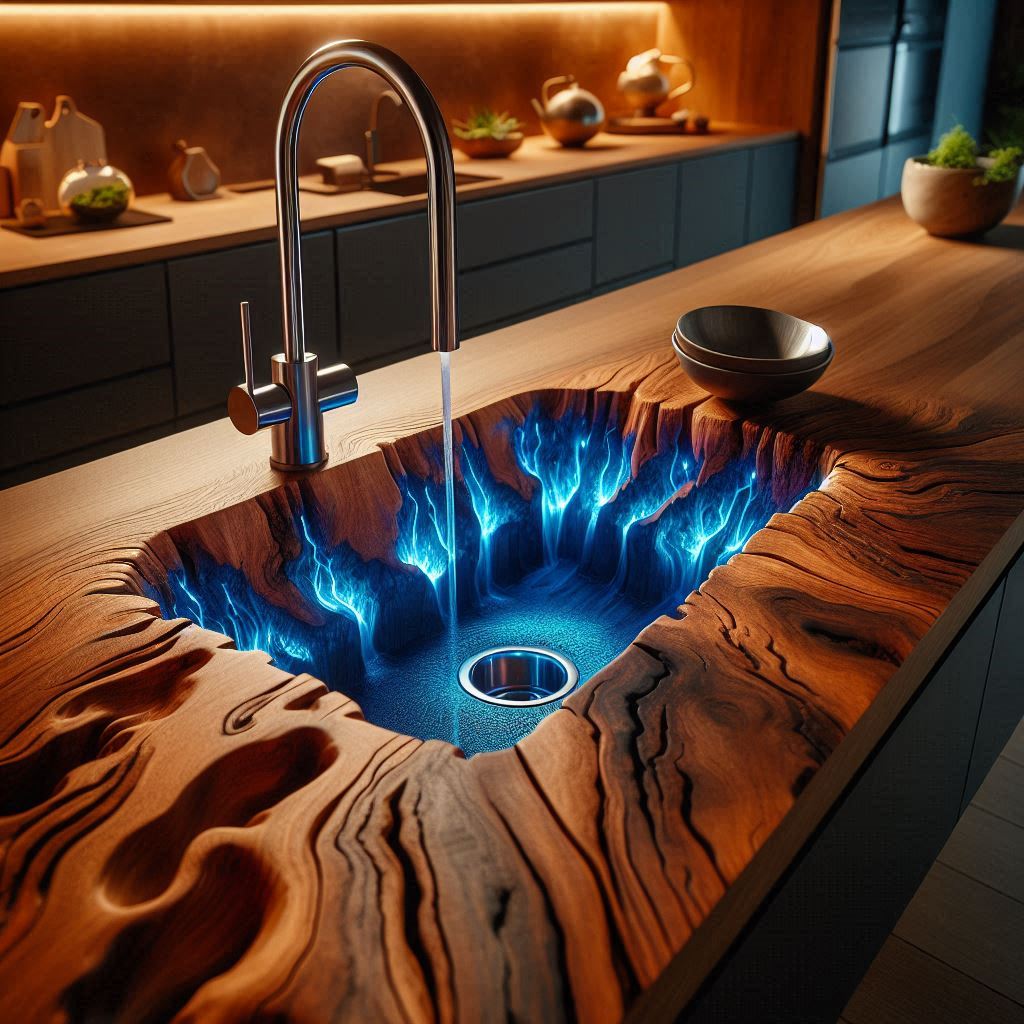
Comparison with Other Sink Materials
When comparing epoxy nature sinks to other materials such as stainless steel, porcelain, or granite, it’s essential to weigh the pros and cons.
While stainless steel is often praised for its durability, it lacks the unique aesthetic appeal of epoxy nature sinks. Porcelain sinks are beautiful but can chip easily, leading to expensive repairs. Granite can be incredibly luxurious but requires regular sealing and maintenance.
Ultimately, the choice between materials will depend on individual preferences, lifestyle, and budget considerations. However, the unique blend of aesthetics and functionality offered by epoxy nature sinks often renders them a compelling option.
User Experience and Feedback
No discussion of epoxy nature sinks would be complete without considering the voices of those who own and use them. User experiences can provide valuable insights into the real-world performance of these sinks.
Testimonials from Homeowners
Many homeowners who have installed epoxy nature sinks report high levels of satisfaction. Common themes in testimonials include appreciation for the unique designs, ease of maintenance, and durability.
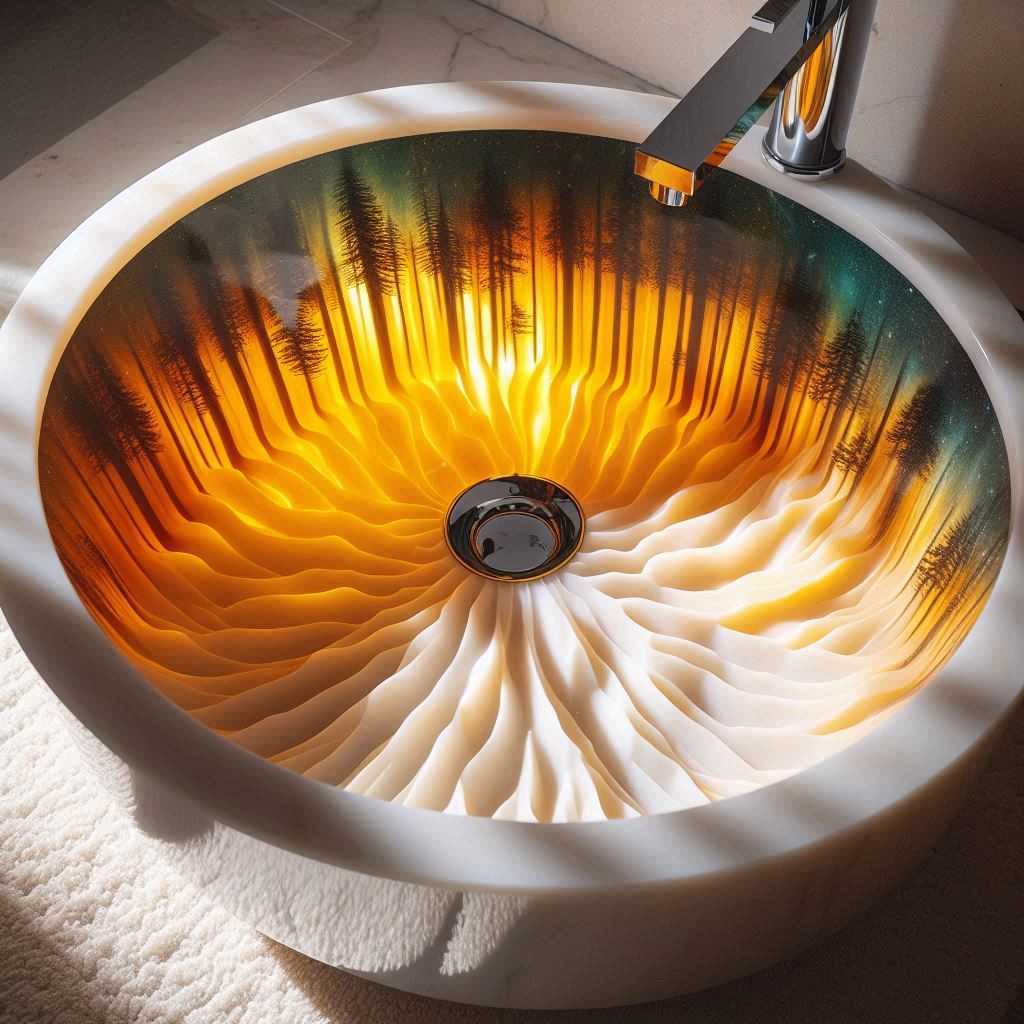
Homeowners often express delight at how their epoxy nature sinks serve as conversation starters when friends and family visit. The ability to customize colors and patterns allows them to create a truly one-of-a-kind feature that complements their home’s character.
Expert Opinions on Performance
Industry experts echo the sentiments of satisfied homeowners, highlighting the performance benefits of epoxy nature sinks. Designers appreciate the endless possibilities for creativity, while contractors applaud the material’s resilience and ease of installation.
Experts emphasize that epoxy nature sinks are an intelligent choice for modern homes, blending form and function seamlessly. With advances in technology, these sinks continue to improve, solidifying their place as a staple in contemporary interiors.
Environmental Impact of Epoxy Nature Sinks
As the demand for eco-friendly alternatives grows, the environmental impact of materials used in home design comes under scrutiny. Understanding the sustainability practices associated with epoxy nature sinks is essential for conscious consumers.
Sustainability Practices in Production
Manufacturers of epoxy nature sinks are increasingly adopting sustainable practices to reduce their carbon footprint. This includes sourcing raw materials from responsible suppliers and implementing energy-efficient production methods.
Some companies even focus on using recycled content in their resin formulations, contributing to a circular economy. As consumers become more eco-conscious, choosing products produced with sustainability in mind resonates positively.
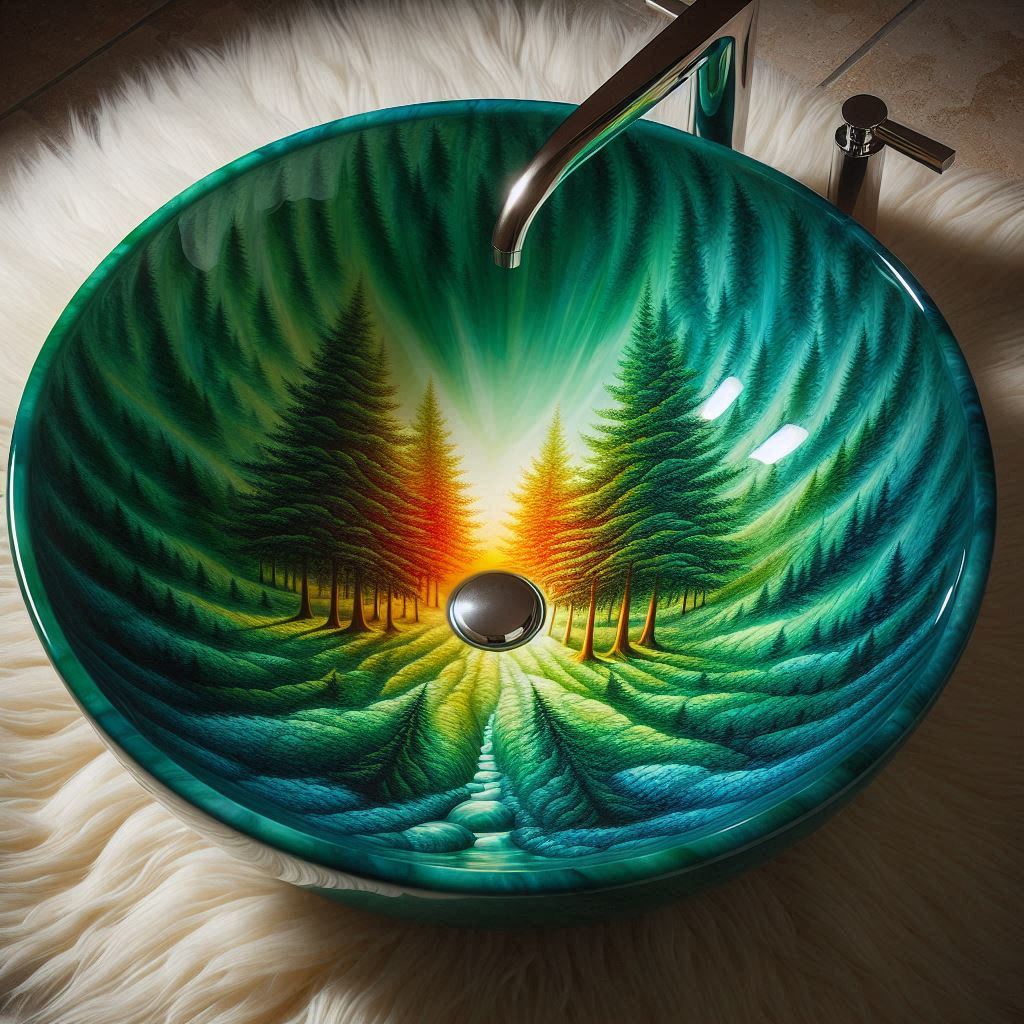
Recycling and Disposal Considerations
While epoxy itself is durable, consideration must be given to its disposal at the end of its life cycle. Unlike some materials that are easily recyclable, epoxy nature sinks poses challenges due to its chemical composition.
Homeowners should inquire about recycling programs or services in their area and consider repurposing options. Creative reuse of the material, such as transforming an old sink into a stylish table or artwork, can extend its life and reduce waste.
Future Trends in Epoxy Nature Sinks
As the world of interior design continues to evolve, so too does the landscape of epoxy nature sinks. Emerging trends promise to redefine how we think about these innovative fixtures.
Innovations in Design and Manufacturing
Future innovations are likely to focus on enhancing the aesthetic and functional aspects of epoxy nature sinks. New color technologies may allow for even more striking effects, while advanced manufacturing techniques could streamline the production process, making custom designs more accessible.
Furthermore, the integration of smart technology into sink designs may soon become commonplace. Features such as built-in sensors for monitoring water quality and flow could elevate the functionality of epoxy sinks.
Predictions for Market Growth
The market for epoxy nature sinks is expected to grow as more homeowners recognize their benefits. Increased awareness of eco-friendly options and the desire for personalized home fixtures will drive demand.
Retailers and manufacturers may respond by expanding their offerings, ultimately creating a broader range of designs and price points. As the trend continues to thrive, epoxy nature sinks may solidify their status as a must-have for modern homes.
Conclusion
In conclusion, epoxy nature sinks represent more than just a functional element of home design; they encapsulate the intersection of art, innovation, and practicality. With their customizable designs, exceptional durability, and eco-friendly options, they cater to the diverse needs of today’s homeowners.
As we continue to embrace creativity and sustainability in our living spaces, the trend of epoxy nature sinks is poised for continued growth. Whether you’re redecorating your kitchen or bathroom or simply seeking a unique centerpiece, exploring the possibilities of epoxy nature sinks is undoubtedly worth considering. Embrace this captivating trend, and transform your home with a touch of artistry and elegance.

